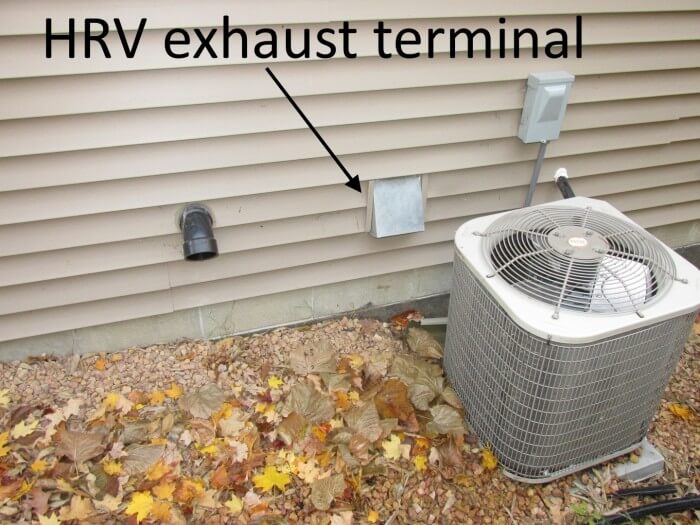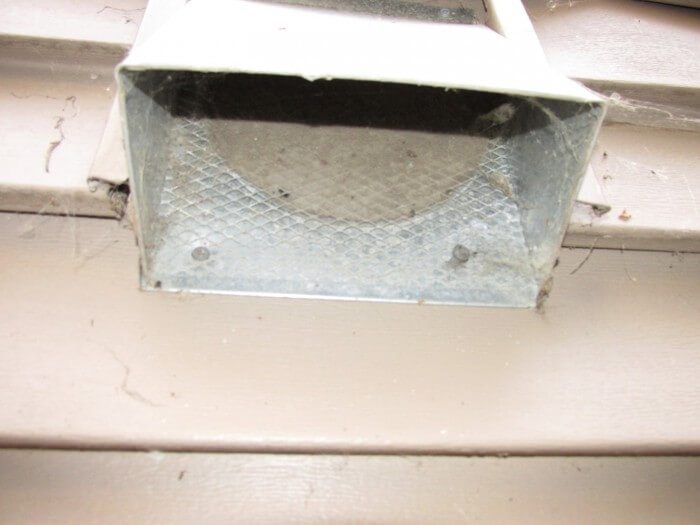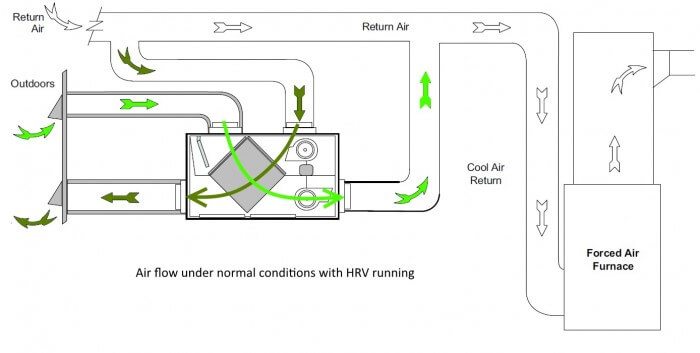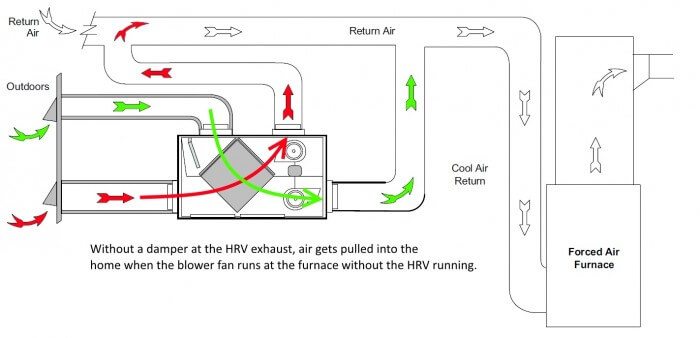I recently stumbled upon a fairly odd safety hazard with newer homes, and I want to make other folks aware of this issue. While inspecting a home in Burnsville last year, I found that both the intake and the exhaust terminals for the heat recovery ventilator, or HRV, were dirty. It's typical to have a dirty intake at the HRV, but not a dirty exhaust. Check out the photos below.
Of course, my first thought was that the installer made a mistake and swapped the exhaust and intake ducts at the HRV, but that wasn't the case. The other HRV terminal was much dirtier. To help figure out why this exhaust terminal was so dirty, I went inside and turned the HRV off and turned the blower fan on at the furnace. As you can see from the video below, air is getting sucked in through the HRV exhaust.
This is a bad, unsafe thing. Any time the furnace is running without the HRV running, the HRV will be pulling hazardous exhaust gas from the furnace into the home. You know, carbon monoxide and all that. Bad stuff. Since finding this last year, I've found the same condition at several more houses. I'll explain how this happens.
When an HRV has the fresh air supply and the stale air exhaust ducts connected to the furnace return plenum, it will look like the diagram below. In these cases, the blower fan on the furnace needs to be interlocked with the HRV, but the HRV is not interlocked with the furnace blower fan.
In the problem scenario, the furnace blower fan runs, the HRV doesn't, and outdoor air gets pulled into the home through both the HRV intake and the HRV exhaust. It only makes sense; after all, they're both connected to the furnace's blower fan. There's a lot of suction there.
This isn't a safety issue if there are no contaminants near the HRV exhaust, but it's really unusual to not have any contaminants there. Nobody likes to have a bunch of terminals littered throughout outside of their house, so most builders put the dryer exhaust, basement bath fan exhaust, furnace exhaust, water heater exhaust, and HRV exhaust right next to each other. There are a whole bunch of contaminants that can be sucked into the home through the HRV exhaust.
So what's the solution?
Some manufacturers have a motorized damper on the inside of the HRV stale air exhaust port that closes when the HRV is not in operation. As long as the motorized damper is functioning, this will prevent a problem from occurring. Some manufacturers require a spring-loaded backdraft damper to be installed inside the stale air duct. A long as it's installed properly and functioning, this will prevent a problem from occurring.
In some cases, however, there are no safeguards in place to prevent this problem from occurring. To me, this seems like a major oversight by some manufacturers to allow this to happen. All it would take to prevent a problem like this would be to have a backdraft damper installed at the exhaust terminal, but I can't recall ever seeing that specified by a manufacturer.
My advice to homeowners, home inspectors, and HVAC contractors is to check HRV exhaust terminals for dirt and debris, as shown in the photo at the top of this blog post. This is a clear tipoff that the HRV is sucking air into the home through the exhaust. The next step should be to turn the HRV off, turn the furnace blower fan on, and then see if the HRV exhaust terminal is pulling air into the home by repeating the test that I showed in the video above. If so, have an HVAC contractor fix it.
Related Posts:
- HRVs, Part 1 of 3: Why Houses Need Them & What They Do
- HRVs, Part 2 of 3: Maintenance & Operation
- HRVs, Part 3 of 3: Installation Defects






